Nicola Gobbo offered her condolences to Nikki Komiazyk when they met for the only time in a South Melbourne cafe. Komiazyk had felt overlooked since the killing of her parents, Terry and Christine Hodson, and she welcomed the lawyer’s show of warmth.
No one seemed to care anymore. Komiazyk still bid her parents goodnight when she went to bed at night. Even now as an adult, she missed their kisses and cuddles, albeit amid the drugs and guns.
PART 3: THE MAN IN THE GOLDEN COFFIN
PART 8: HOW WE UNCOVERED THE TRUTH
Her brittle smile hid a torment once shared by investigating police officers. Who had coldly executed her mum and dad side-by-side one Saturday night in 2004 as they watched TV?
This search for truth explained her coffee with Gobbo. Gobbo had once been her father’s lawyer, and was known to the family as a kind of legal fixer.
Gobbo seemed to know everyone in the underworld.
LIFE & CRIMES PODCAST ON iTunes, WEB OR SPOTIFY:
WHAT WAS THE GANGLAND WAR ALL ABOUT?
Andrew Hodson, Komiazyk’s brother, recalls once driving Gobbo home to her Port Melbourne apartment in the same complex as Tony Mokbel.
He was aware that she had attended the christening of Carl Williams’ daughter Dhakota, where she was snapped with Williams and his hitman, Andrew “Benji” Veniamin, who would be killed in a restaurant shooting soon afterwards.
As Melbourne’s gangland reckonings had spilled into public, Andrew Hodson watched Gobbo “bounce” between the cops and crooks.
Williams, her client, had gone on a killing spree in the months before the Hodson deaths.
He had ordered the death of a man in front of his young son on the street and the shootings of Jason Moran and a friend in front of Moran’s children at a footy clinic.
The Hodsons would be underworld victims number 10 and 11 during a 12-month blowout of bloodshed.
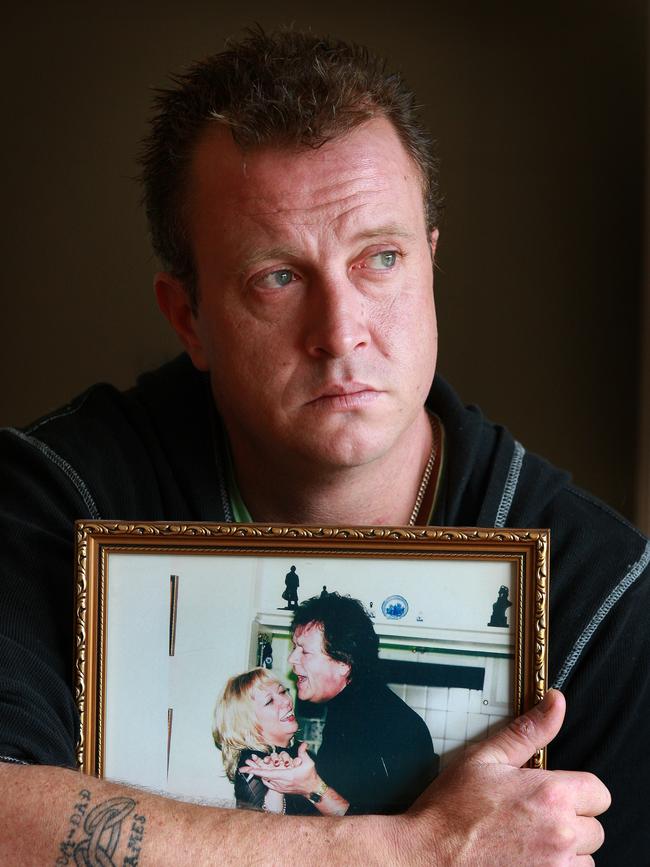
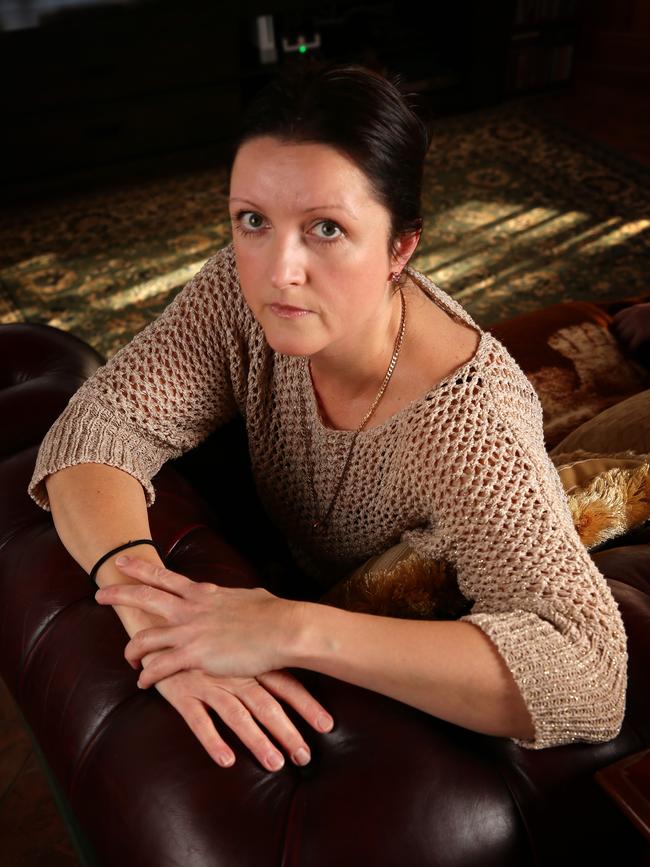
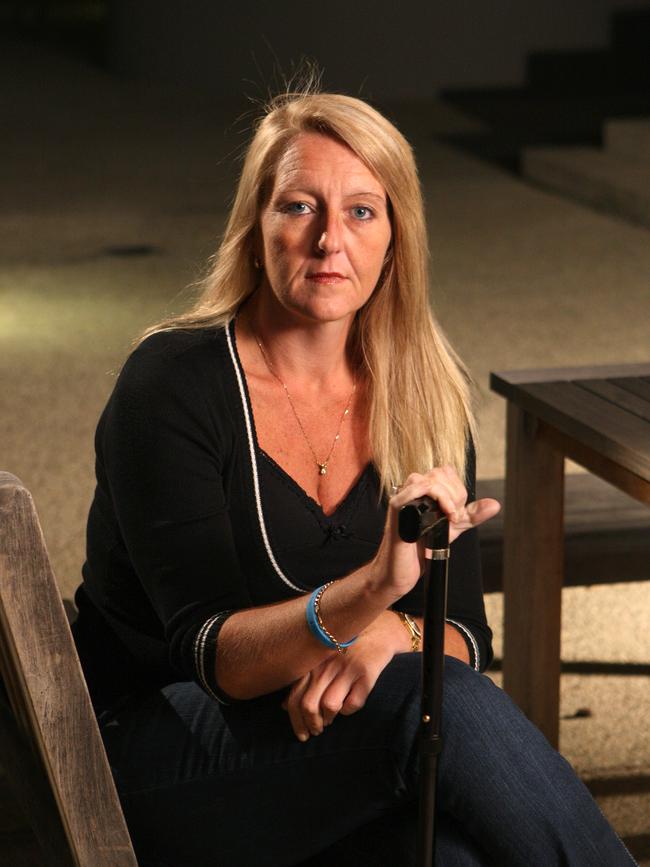
Gobbo had represented Andrew Hodson on drug charges.
He couldn’t know then what can only now be revealed — that Gobbo would secretly work both sides of the law. She was a criminal barrister and a police informer.
She officially entered the police books as informer 3838 in 2005, though unofficially
she is thought to have been helping police for years before. She used confidential information provided by her clients to help police put them and their associates in jail.
Komiazyk knew none of this when she met Gobbo in 2012.
She was suggesting ways for the family to push for a coronial inquiry. Komiazyk recalls a strange turn in the chat, when Gobbo boasted about her black Mercedes.
“She ended up saying that the police aren’t allowed to come anywhere near her,” Komiazyk recalls.
“She said she could run any red light in Victoria and they wouldn’t pull her over.”
Komiazyk didn’t know that Gobbo was boasting about the perks of police informing.
It’s only one element she cannot comprehend. She cannot grasp the clouded machinations of her parents’ deaths, or the marbled layers of misinformation that marked both their killings and the subsequent investigations.
Her frustrations flow freely in her tears. She is convinced that Gobbo knows more than
she has admitted. She frets that any chance of belated justice rests in a gold coffin with Williams.
What was Gobbo doing in the muddle of phone taps, secret meetings and hidden wires that exploded in four gunshots in Kew on May 16, 2004? Whose side was she on?
Komiazyk now believes that Gobbo’s patter over coffee that day went deeper than misplaced vanity. Mandy Hodson, Nikki’s sister, was at the meeting, too.
She’d met the lawyer before, and with her father had coined an unkind nickname for her: Sharon Twenty-Stone.
Like him, she says, she didn’t trust Gobbo, mainly because Gobbo’s assurances never came true.

Mandy Hodson has not read all the dossiers into the Hodson deaths.
Many inches thick, most of them are marked by the misspelling of Terence Hodson’s first name. They amount to a drip feed of information blotted by gaps, some formed by the questions never asked of Gobbo.
The preferred police version of events condenses to one gunman for hire and a chain of murderous motivation. The gunman was said to be Rodney Collins, a professional hitman who died earlier this year in jail.
Police believed that Collins was commissioned by one of their own — Paul Dale, a former drug squad detective sergeant who was sighted not long ago as an Auskick coach in northern Victoria. Dale has always protested his innocence.
Dale, the policeman, was once thought of as a charmer, a man’s man as well as a ladies’ man. He was well-liked by his colleagues, always good for a beer — with both cops and crooks.
Dale survived years of taskforce-driven pursuit, which he labelled as a vendetta headed by former Victoria Police chief commissioner, Simon Overland.
In his 2013 book Disgraced?, Dale made at least one fair point: all the witnesses lined up against him — including Gobbo — were compelled to speak by self-interest or what he calls “greed”.
For the scales of justice were tilted for the Hodson killings. Truth was apportioned, levered and induced. So many versions blurred in so many agendas that clarity was lost.
In its surrender lie the casualties: the Hodson children who cannot sleep.
Komiazyk and her siblings have long called for a royal commission.
For Mandy Hodson, it would dim the vision of the open casket and her mother’s face frozen in a permanent scowl. Should the worst happen, her mother had said, “I’ll haunt them”.
But where would a royal commission start? Or end? And how would the lawyer in the black Mercedes fare under such scrutiny?

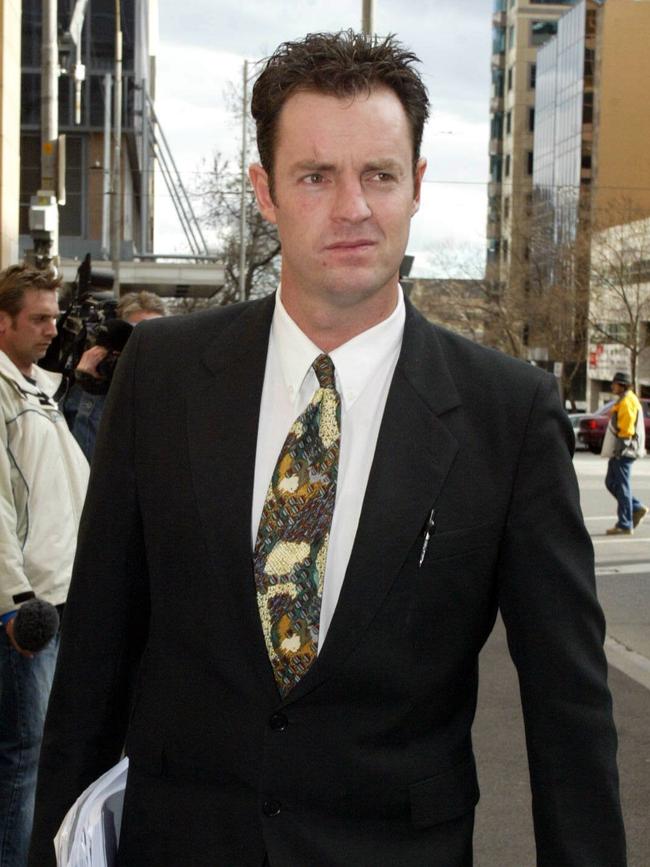
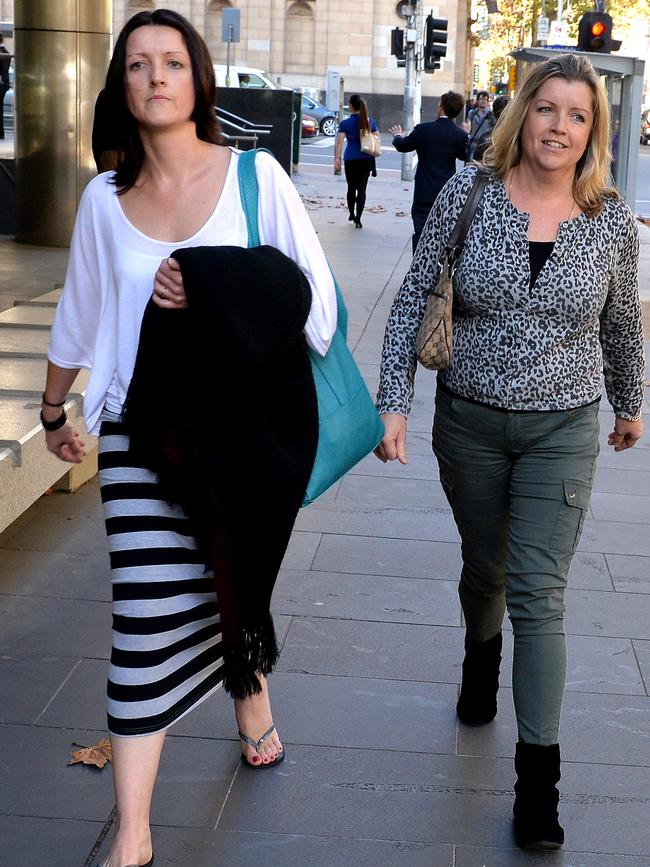
Terry Hodson was a doting grandfather.
He and Christine were childhood sweethearts from the same village in Staffordshire, central England. There was a BMW in their East Kew garage, just down the road from the Harp Rd police station.
Cops liked Hodson, even when they were charging him. He’d once run a car yard and, by his 50s, lent himself to Arfur Daley stylings. His home was filled with family portraits which cast a conflicting softness to the clients who came to the garage roller door.
Chrissy, as cops called her, kept a neat home.
“If you didn’t know who they were, you’d think: ‘Well, they’re quite nice people’,” says one investigator.
Hodson nicknamed his grandson “Villain” and his gun “Roscoe”. He sold drugs and used his own product. When Andrew and Mandy Hodson were charged with drug offences in 2001, Terry Hodson turned police informer to help his kids.
His handler was Detective Senior Constable David Miechel, who would end up under Dale at the Major Drug Investigation Division (MDID).
Hodson would tell police that Dale always complained about a lack of money, and that he lived a lifestyle beyond his income.
FOLLOW EVERY TWIST IN THE SAGA
“Dave” Miechel sported a ponytail and motorbike. He grew up on the Murray River and hung out with the nerds at school. The first surprise for classmates was his growing up to be a detective, the second was his being a bent one.
Miechel was secretive, in ways that put off fellow officers, as well as his love interest, Mandy Hodson, whom he had charged with drugs offences. In return for informing, Terry Hodson was allowed to deal drugs from his home.
Miechel’s superiors knew that he was too close to the Hodsons. Nikki knew it, too: when her partner, Peter Reed, was about to be raided at home, she says Miechel tipped her off.
The dynamics of Hodson and his handlers breached every tenet of informer management, as set out by informer expert Paul Walshe in a paper sponsored by the Churchill Trust. Informer misuse drives the Hodson tragedy.
Overland admitted mistakes in 2005. “We had concerns about Hodson as an informant,” he told the ABC.
“The review had come up clean, and we let the current arrangements continue on. With the benefit of hindsight, we now understand that that was a bad decision on our part.”
This bad decision led to a scene that plays over and over for Mandy Hodson in sepia tones.
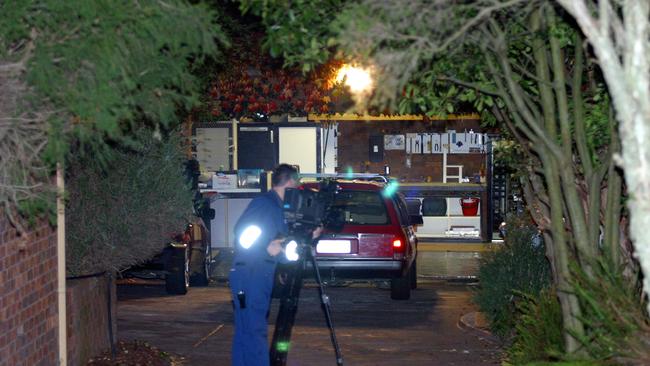
Drawn by his sister’s shriek, Andrew rushed in.
He saw the hands and his parents’ head wounds. They were lying face down, side by side, in front of the TV. He kept touching them, even though they were stone cold. He kept calling their names.
The couple had been caught unawares. Christine wore pink moccasins. Terry, the star witness in an upcoming case of cops charged with corruption, wore trakky daks.
A spent bullet cartridge was perched on the back of his head.
Mandy Hodson usually had dinner at her parents’ place on Saturday nights. But she’d partied too hard the night before and changed Saturday plans to Sunday. She still wonders if a hangover saved her life.
James Hodson, an 11-year-old grandson, was meant to stay over that Saturday night. Instead, James, a Carlton fan, rang Terry, a Hawthorn fan, at 9.47pm to chat about the Carlton-Hawthorn match on TV. It was the last time Terry Hodson was known to be alive.
On discovering her parents’ bodies, Mandy Hodson snorted a line of cocaine to steady her nerves. Andrew called Gobbo. Then he rang a cop.
“F---ing Dale’s done it,” he told Peter De Santo, of the ethical standards department, when the detective inspector arrived.
Andrew Hodson was still flustered when he told another officer at the murder scene: “You have to make sure you get that bloke.”
Yet investigators had few solid leads at the time. The home’s CCTV security tapes had been removed. Occasional police patrols, later described by a senior officer as an exercise in “pathetic” penny-pinching, had spotted nothing.
Hodson had been playing a “dangerous game”. “I think he knew it,” Komiazyk says, “and I think he liked that excitement.”
BIGWIG: TONY MOBEL BOOK EXTRACT
The Hodson deaths would kill careers.
Terry Hodson, in his final, fretful days when he called himself a “dead man walking”, predicted with macabre prescience that his death would confound authorities. There were failed prosecutions. Resentments still fester.
Police, belatedly, laid out all of the available evidence from the time of the Hodson deaths over 14 years after the homicides. It is contained in a submission to coroner Judge Ian Gray in 2014 which links Gobbo to Williams, Dale and drug king Tony Mokbel.
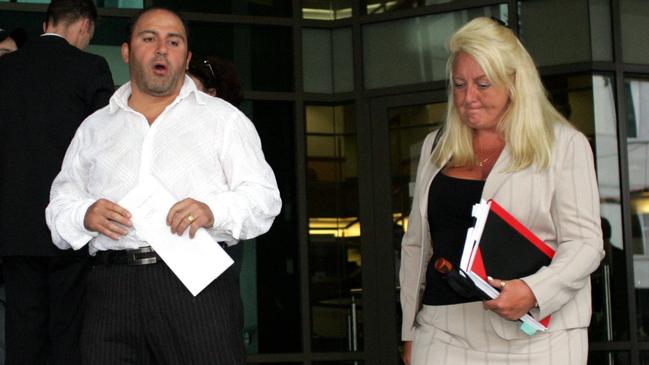
The police theory — based largely on Hodson’s account from the grave — goes that Hodson, Miechel and Dale had planned a drug house burglary over chicken salad at Romeo’s restaurant in Toorak.
The trio pursued “opportunities”.
A criminal symbiosis bloomed between the handlers and their source which was unchecked by police management. It would be an “easy job”, Hodson later said, given Dale’s unit had the house — a store of drugs and cash for Mokbel — under surveillance.
Miechel and Hodson carried out the burglary of cash and ecstasy tablets in Dublin St, Oakleigh, on Grand Final night in 2003.
They smashed a light and a neighbour called police. Despite being basted in “Stop” dog repellent, Miechel was bitten by police hound Silky after he was discovered up a tree.
Miechel rang Dale from the ambulance, and Dale turned up at his bed in room 104 at the Freemasons Hospital. The Office of Police Integrity could not prove that Dale then went to the MDID offices at the St Kilda Rd police complex and stole a confidential dossier which would become known as the Blue File.
Marked “highly protected”, it contained 31 information reports on Hodson’s police informing and would be circulated throughout the underworld before his death.
No one else had reason to pinch the file, investigators later argued. Under informer guidelines, Dale should not have been able to access the Blue File.
“Dale had the opportunity to steal the Blue File and, if he was involved in the break-in, he had the motive to do so,” the OPI later concluded, in a report by retired judge Tony Fitzgerald QC. This allegation — “no evidence that any other person did so or any sufficient basis for suspecting any other person” — would be central to a future murder charge against Dale.
Miechel, who pleaded not guilty to the burglary and never offered a statement, got out of jail this year. Hodson was offered a deal of a suspended jail term and almost immediately implicated Dale in the burglary’s planning.
The police line has always hinged on the belief that Dale had Hodson killed to cover up his involvement in the burglary.
What lies in dispute are events after Hodson’s burglary arrest and before his murder.
Gobbo was Hodson’s lawyer when he was speaking to internal investigators.
At the same time Hodson was seeking to reassure his “friend” Dale through Gobbo that everything would be “all right”. Dale says he knew nothing of the burglary plot.
Investigators preferred Hodson’s version to Dale’s. They dated Dale’s supposed professional slide to his ties with “Stretch”, a Carl Williams associate.
They said Stretch and Dale drank together in a Brunswick pub, and that Dale improperly sought to help Stretch with a murder charge.
Police say Dale courted Stretch to approach Williams, who then paid Dale for tip-offs. At the same time, Hodson was informing to Dale, sometimes about Williams.
Here, again, we can only relate differing versions of critical conversations.
By Gobbo’s account, Hodson at the time wanted Dale to know that he would not implicate him. In fact, according to police statements he made about the Oakleigh burglary, Hodson had alluded to the “three-striper” (sergeant) within a week.
We know that Hodson sought to meet Dale, on police instructions, in the hope that Dale would implicate himself in the burglary.
Gobbo later said that Dale was desperate to know what Hodson was saying. In her notes of a meeting with Hodson, as recounted by police, she wrote she was told that “Paul Dale is off and involved as is entire d/squad hierarchy”.
What hasn’t been revealed — until now — is that Hodson did not trust his own lawyer.
He told internal investigators after the burglary that Gobbo was sleeping with Dale.
He wore white overalls fitted with a secret wire in at least one meeting with Gobbo. Internal investigators hoped that Gobbo would implicate Dale in the burglary.
Hodson’s instincts were well placed.
At the same time as acting for him, Gobbo was also an unregistered police informer. She had begun meeting with a detective sergeant from the Purana (gangland) taskforce from mid-2003.
They met six times, she says, from that time until after the Hodson deaths. Her justification, in a recent letter to police command, does not readily tally with her choices at the time. “What lead (sic) me to do that was my own frustration with the way in which certain criminals (Carl Williams) were seeking to control what suspects and witnesses could and could not do or say to Police via solicitors who were not in my view, acting in the best interests of their clients because of the undue influence and control of “heavies’ such as Williams.
Gobbo’s statement, provided in January 2009, described a pattern of drinks and dinners with Dale before the Hodsons were killed.
DEATH STARE: CARL’S EVIL KILLER


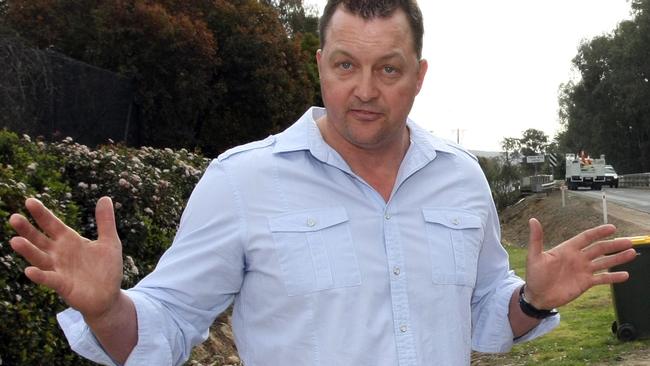
Dale would later recall Gobbo as the highest-profile drug lawyer going around.
She was the best, by his reckoning, and she was careful. Fearing bugs, she did not meet clients in her office.
A meeting between Dale and Gobbo on October 9, 2003, at O’Connell’s Hotel in South Melbourne, was, she said, “entirely social”.
But she did not characterise subsequent catch-ups. Nor did she explain why she facilitated Dale’s desire to speak with Williams — who killed at least four and up to 10 men in Melbourne’s gangland wars — in the year preceding the Hodsons’ deaths.
Gobbo described a meeting on May 2, 2004, in which Dale rang drunk after a day at the football, and texted her repeatedly. She took him to a Richmond pub.
Phone call intercepts reveal Dale’s determination to catch up with Williams. Dale told George Williams, Carl’s father: “Tell Carl to ring (Gobbo). He’s a f---ing useless prick.” He rang George Williams an hour later to check “if Carl has called (Gobbo)”.
She met with Williams on May 5.
She said she told him that Dale wanted him to call. Police alleged that Williams called Dale on his burner phone the next day. They are then thought to have met — 10 days before the Hodsons were killed.
Dale denies that a meeting took place. Police point to a George Williams’ car tracker and Dale’s place of work at the time. What was purportedly said goes to the crux of the police case. Williams offered his version of the alleged conversation three years later, under heavy inducements. He said he called Dale from a payphone, which was verified.
Then, he said, they met and the pair walked.
Dale, according to Williams, said he had hired someone to kill Hodson but it was taking too long. Dale said he would pay $150,000. Could Williams help?
Williams said he brokered the delivery of a cash payment to a wheelie bin at his mother’s house. Dale produced an envelope with Hodson’s details. The chat ended, according to Williams, when Dale said he had to get to day care or kinder.
The next day, Williams met with Rodney Collins, a hitman Williams had befriended as a kid. They caught up twice that day; at a Red Rooster carpark and in a city restaurant, where Tony Mokbel joined the wider group.
Gobbo was also in contact with Mokbel before the Hodson deaths.
Police allege she saw Dale on February 27.
The next day, Mokbel was known to possess the Blue File.
A phone call between Gobbo and Mokbel was intercepted by the Australian Federal Police that month. In the call, Gobbo said that their mutual friend “Pauline” had been in touch and had documents for Mokbel. Victoria Police later claimed that Gobbo was talking about the Blue File.
The Gobbo/Mokbel phone intercept was vital. In its Coroner’s Court submission in 2014, police argued that the phone call, Dale’s movements on February 27 and Mokbel’s possession of the Blue File confirmed that Dale had stolen and distributed the file.
“At worst, it was done by Dale so as to deliberately jeopardise Hodson’s safety,” police alleged.
Yet Victoria Police say they became aware of the AFP intercepted phone call only after murder charges against Dale were dropped in 2010 — more than six years after the call.
The reasons for the purported delay in information-sharing remain unexplained to this day. Not only was it vital evidence in the investigation of the Hodson murders. Timely sharing of police intelligence at the time may have saved the Hodsons.
Gobbo’s reach in late 2003 extended to Azzam Ahmed, who ran the burgled drug house in Oakleigh. Gobbo was his lawyer, too, and she communicated with Ahmed on burner phones he provided. She also represented Abbey Haynes, who was the drug-house sitter.
As one investigator says now: “It’s pretty serious shit.”
Gobbo shapeshifted as adviser, facilitator and lawyer. One close observer says she thrilled to the proximity of the players, like a “double agent” who “wheeled and dealed” out of self-serving gratification.
“She’s the puppeteer,” Komiazyk now says. “She’s the master puppeteer. She’s dangerous. She’s a very dangerous woman.”
Komiazyk is haunted by a chance encounter at a Lilydale supermarket with the suspected shooter of her parents, Rodney Collins, soon after her parents’ deaths. Sporting white track pants and a reptilian leer, he asked if the police were leaving her and her partner alone.
Yet she has now shifted her contempt to Gobbo, whose absence at the coronial inquest, left Komiazyk with only more questions — many aimed at Gobbo.
“She seems to have her finger in every little thing,” Komiazyk says.
“And no accountability.”
MORE CRIME:
DEATH STARE: CARL’S EVIL KILLER

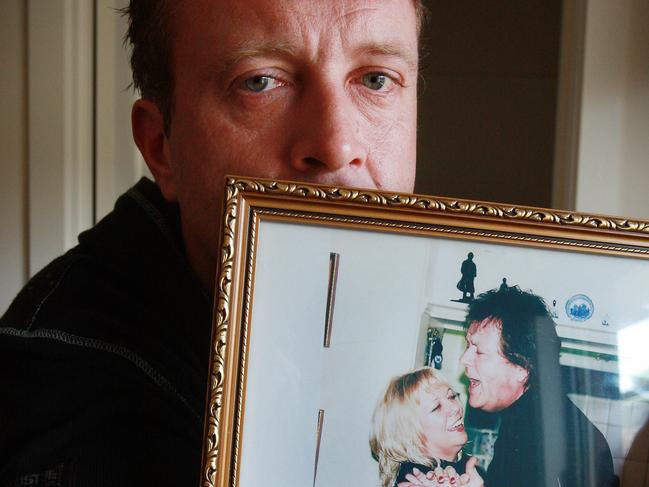
‘Living nightmare’: Family pain of Aussies killed in the Philippines
The family of an Australian couple found dead in a hotel room broke down as they revealed the cruelty behind the senseless murder the Philippines.
Scary way criminals are using GPS trackers
Almost half of all GPS trackers are going to buyers with nefarious backgrounds and many are allegedly used in high-profile cases including the alleged murder of bikie boss Alen Moradian.